Is your IT support department always surrounded by a mountain of requests and issues? An IT knowledge base can be the answer. According to a study by Econsultancy, 51% of customers prefer technical support through a knowledge base.
It is more than just a repository; it helps manage and disseminate technical knowledge efficiently. It addresses common challenges like slow response times, repeated queries, and the strain on IT resources by providing a centralized platform where solutions are just a few clicks away.
In this blog, we’ll discuss what an IT knowledge base is, why it’s an indispensable resource, and how to create one that fits your needs. We’ll also explore some of the best software options to get you started.
What Is an IT Knowledge Base?
An IT knowledge base is a centralized repository for storing and managing information related to information technology within an organization.
It serves as a comprehensive resource for IT support teams and end-users, enabling quick access to detailed information on troubleshooting, procedures, systems documentation, and user guides.
The primary objective of an IT knowledge base is to help in faster problem resolution, reduce downtime, and enhance the efficiency of IT operations by making relevant information readily accessible.
For example, when an employee encounters a recurring error when accessing their email, the troubleshooting resources can guide them through a series of steps to diagnose and resolve the issue independently without needing to escalate to the IT support team.
Why Is an IT Knowledge Base Important?
In today’s technologically driven environments, organizations face a myriad of IT-related queries and issues, ranging from simple software installation questions to complex network troubleshooting.
Without a centralized repository of information, like an IT support knowledge base, responding to these demands can become time-consuming and inconsistent, resulting in increased downtime and frustration among users and IT staff.
An IT knowledge base addresses these challenges by providing a single, accessible source where solutions and procedures are systematically organized and readily available. It acts as a first line of support where users can independently find answers and guidance, reducing IT personnel’s need for direct intervention.
Moreover, an IT knowledge base helps train and share knowledge within the organization. It helps new employees quickly understand the IT framework and operations and offers continuous learning opportunities for existing staff.
Documenting problem-solving processes and technical knowledge also helps preserve critical organizational intelligence. This repository becomes increasingly valuable as it evolves, continually capturing new insights and solutions from daily operations.
What Are the Benefits of an IT Knowledge Base?
An IT knowledge base helps centralize critical information and make it readily accessible. Let’s discuss the points that illustrate its importance:
Improved Efficiency & Self-Service
An IT knowledge base empowers users to resolve common issues independently by providing easy access to information, guides, and troubleshooting steps.
This reduces the number of routine inquiries that reach the IT support team, allowing them to focus on more complex problems. This improves the overall organizational efficiency as employees spend less time waiting for IT assistance.
Better Consistency & Reliability
With an extensive IT help desk knowledge base, organizations ensure that all support interactions are consistent. Whether resolving a software issue or configuring hardware, the knowledge base provides standardized procedures for all employees.
This enhances the reliability of the support provided and ensures compliance with best practices and security policies.
Reduced Costs
An IT knowledge base helps reduce operational costs by decreasing the dependency on IT support personnel to resolve every minor issue.
Fewer support calls and emails mean the IT staff can be optimized, and resources can be allocated more effectively towards strategic IT initiatives rather than routine maintenance and support tasks.
Continuous Learning & Improvement
An IT knowledge base keeps evolving by collecting new knowledge and solutions. This repository of information supports ongoing learning for new and existing employees, helping them stay updated with the latest technologies and processes.
Furthermore, as issues are resolved, the solutions are added to the knowledge base, continuously enriching it and making it more valuable over time.
Related blog: How to Impart Product Knowledge Training to Your Employees
24/7 Availability
An IT knowledge base provides round-the-clock access to essential information, enabling global and remote teams to find solutions outside standard working hours.
This 24/7 availability is crucial for businesses operating across multiple time zones, as it ensures that help is always available, regardless of the hour or location.
What Should Be Included in an IT Knowledge Base?
An IT knowledge base is essential for managing information and supporting users within an organization.
It consists of several key components that ensure it functions effectively as a comprehensive resource. Let’s discuss its various components:
Content Repository
The content repository is the foundation of any IT knowledge base. This includes all the documentation, how-to guides, troubleshooting articles, FAQs, and policy information relevant to IT operations.
The IT knowledge base articles must be well-written and comprehensively cover the topics necessary for users to perform their tasks.
Regular updates and revisions are essential to keeping the repository accurate and relevant as technology and company procedures evolve.
Search Engine
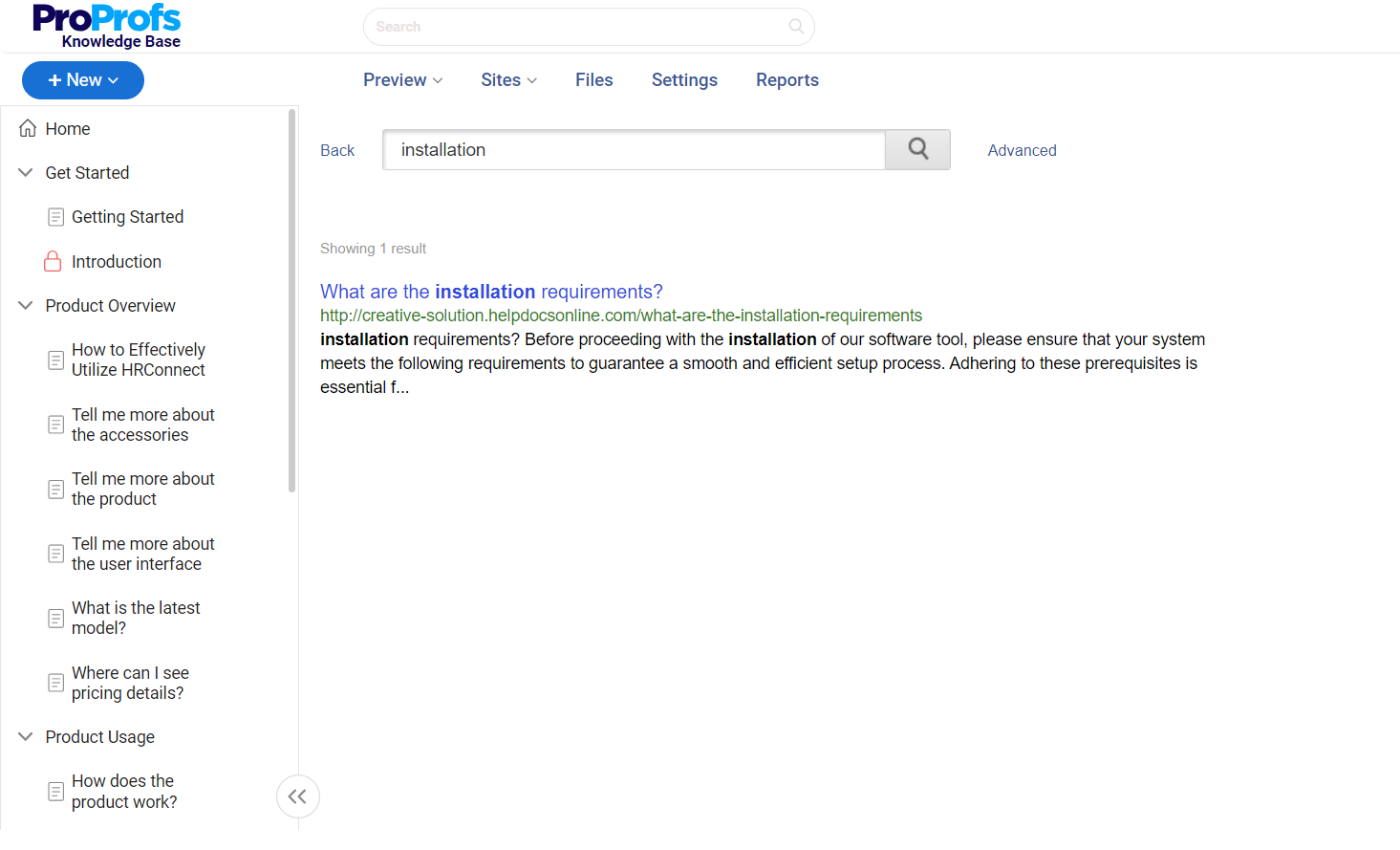
A robust, intelligent search engine is essential for an insightful IT knowledge base. It should support robust search functionalities, like keyword search, natural language queries, and filters, to help users find information quickly and efficiently.
The effectiveness of the search engine affects the user experience, deciding how easily users can navigate through content and find the solutions they need.
User Interface (UI)
The user interface of an IT knowledge base should be intuitive and user-friendly, focused on easy navigation and quick access to information.
A clean, simple layout with a logical structure helps users interact with the knowledge base without frustration. Responsiveness and mobile compatibility are also essential for accommodating users on different devices and platforms.
Access Control
Intelligent access control mechanisms help manage who can view or edit the knowledge base content. This ensures that sensitive information is protected and that only authorized personnel can change the knowledge data.
Access control can help maintain the integrity and security of the information contained within the IT index.
Analytics & Reporting Tools
Knowledge base analytics enable monitoring the performance of the IT knowledge foot and understanding how it is being used.
Reporting tools can track metrics like page views, common search terms, and document access frequencies, which provide insights into user behavior and content effectiveness. This data is crucial for improving the knowledge depot on an ongoing basis.
Feedback Systems
Collecting user feedback is vital to ensure the IT knowledge reserve remains useful and relevant.
Feedback systems help users to report problems, suggest improvements, or rate content based on helpfulness. This direct input from users helps administrators understand what works well and needs enhancement.
Integration Capabilities
Integrating the knowledge base with other systems, like customer relationship management (CRM) systems, service desks, or other enterprise management tools, can enhance its functionality and usefulness.
Integration enables a seamless flow of information across platforms, making it easier for users to access and utilize the knowledge buoy in the context of their other work tools.
FREE. All Features. FOREVER!
Try our Forever FREE account with all premium features!
How to Keep Your IT Knowledge Base Updated
Keeping an updated IT knowledge base is crucial for maintaining its effectiveness and relevance. Here are five essential steps to do the same:
Set Up a Regular Update Schedule
Establish a regular schedule for reviewing and updating the content, which could be monthly, quarterly, or bi-annually, depending on the nature of the information and how frequently it changes.
Regular updates ensure the knowledge base reflects the latest IT environment, procedures, and compliance requirements.
Identify Triggers for Immediate Updates
Events like software updates, changes in IT policy, or the introduction of new technology or equipment within the organization require immediate updates to the knowledge base.
Documenting these events helps promptly update the relevant sections of the knowledge base, thus keeping the content current and preventing the dissemination of outdated information.
Optimize Content for Usability & Accessibility
Analyze and improve the knowledge base content regularly for better usability and accessibility. This involves organizing information logically, enhancing the searchability of content, and ensuring that the language used is clear and jargon-free.
Also, check for mobile responsiveness and compliance with accessibility standards to ensure all users can use the knowledge base effectively.
Involve Multiple Contributors
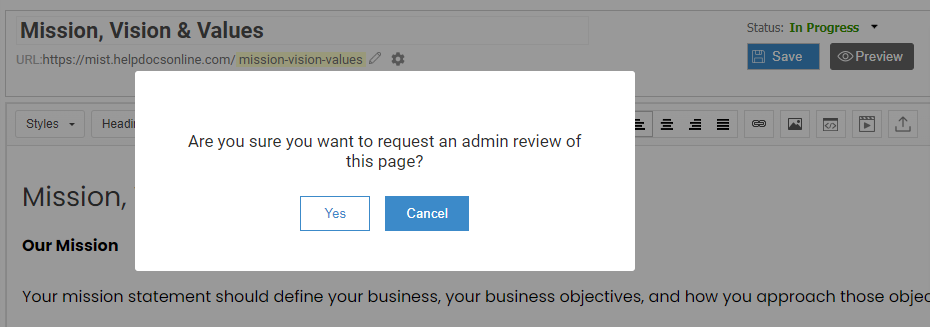
Incorporate contributions from different IT team members to broaden the scope and accuracy of the knowledge base. Different team members can bring unique insights and updates from their specific areas of expertise.
Establishing a process for contributions, including peer reviews and approvals, ensures the information remains accurate and comprehensive.
Utilize Analytics & User Feedback
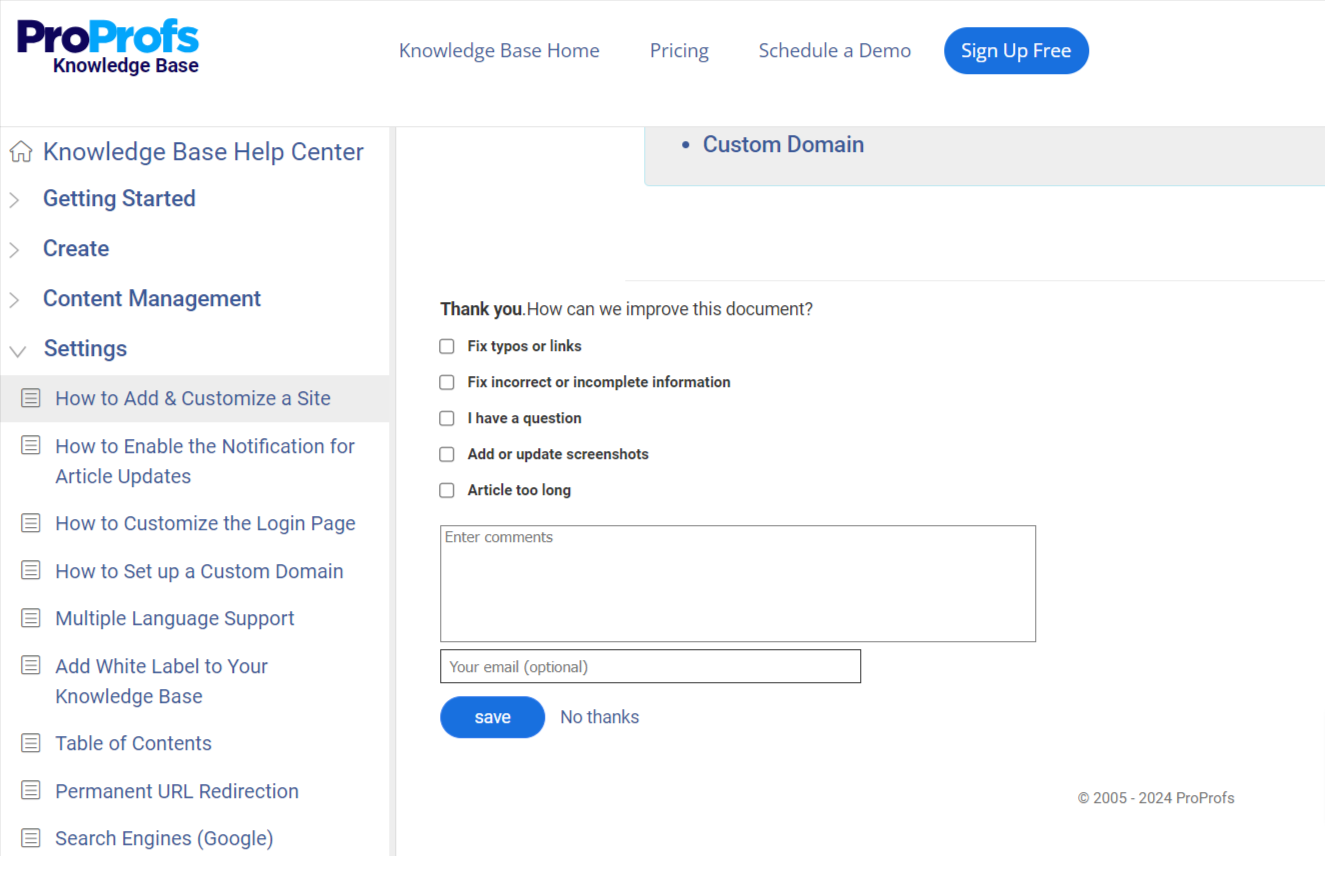
Knowledge base analytics tools help track how users interact with the knowledge base and gather feedback directly from users about their experience and any difficulties they encounter.
Analytics can enable valuable data on which articles are most accessed, which search terms are used, and where users spend the most time.
User feedback, on the other hand, can point out areas that need more clarity or additional information. Both sources of information are vital for making informed updates that genuinely enhance the utility of the knowledge base.
How to Create Your Own IT Knowledge Base
Creating a comprehensive IT knowledge base requires a strategic approach, as well as a thorough understanding of the advantages and components of a knowledge base. Let’s explore the essential steps to create your own IT knowledge base:
Decide on the Purpose & Scope
Start by clearly defining the purpose of your IT knowledge base. Define what issues it will address, who the primary users will be, and what outcomes you expect.
Will it serve internal staff, external customers, or both? Outlining the scope and purpose will guide the content development and structure of the knowledge base.
Gather & Organize Content
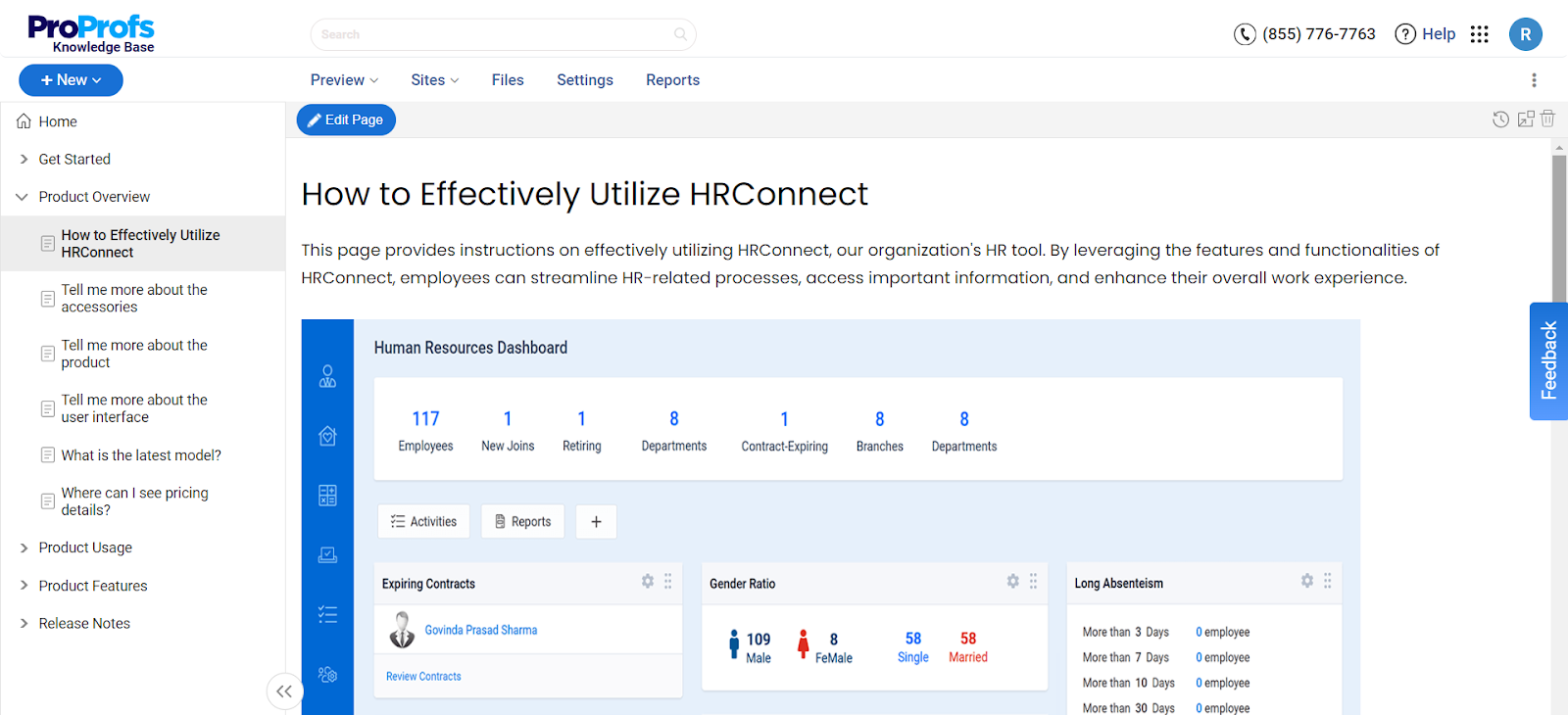
Gather all relevant information for the knowledge base, including troubleshooting guides, FAQs, technical manuals, system configuration instructions, and policies.
Collaborate with your IT teams and stakeholders to ensure the content comprehensively covers all necessary areas.
Choose a Robust Platform
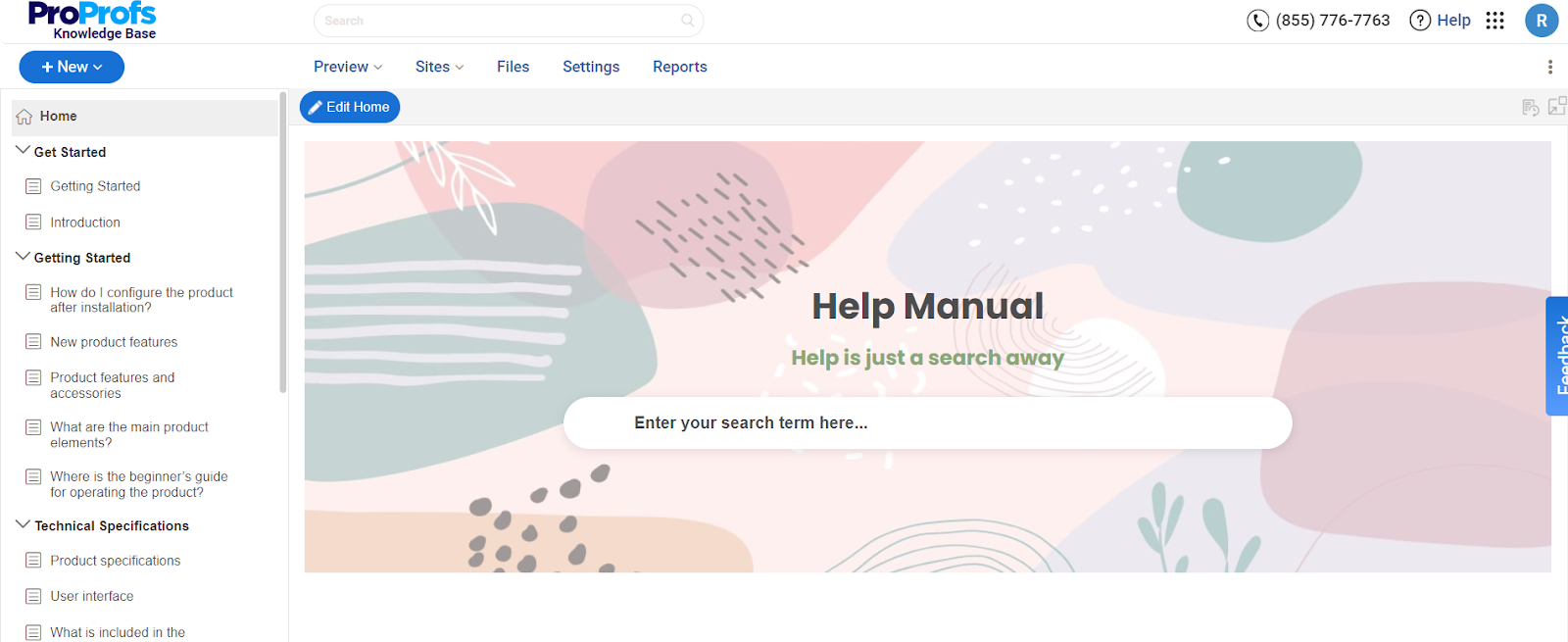
Select a knowledge base software that fits your organization’s needs. Consider platforms with features like robust search capabilities, user-friendly content management tools, and customization options.
The platform should also support scalability to accommodate future growth and the potential addition of new content.
Structure & Categorize Content
Organize the content in a logical manner with clear, user-friendly categories and subcategories.
This helps users navigate the knowledge base more efficiently and quickly find the necessary information. Effective organization is critical to maximizing the knowledge base’s usability.
Write Detailed Articles
Craft detailed, clear, and concise articles for each topic. Use simple language and avoid technical jargon to make the content easy to understand for all users, regardless of their technical expertise.
To improve understanding and engagement, incorporate visuals like screenshots, diagrams, and videos.
Implement Search Functionality
Ensure the knowledge base has robust search functionality to help users quickly locate specific information.
Features like auto-complete, synonym handling, and natural language processing can significantly enhance the search experience and effectiveness.
Test & Review
Before going live, thoroughly test the knowledge base to ensure all links work, the content is accurate, and the navigation is intuitive.
Collect feedback from a test group of users and make necessary adjustments based on their input to improve the overall quality and usability.
Train Users & Promote the Knowledge Base
Train your staff on how to use the knowledge base effectively and encourage them to use it as the first line of support.
Promotion is essential for high adoption rates, and internal communications should regularly highlight the benefits and ease of use.
Maintain & Update Regularly
An IT knowledge base is not a set-it-and-forget-it tool. Regular maintenance and updates are essential to keep the content relevant and valuable.
Establish a regular review schedule, monitor usage patterns, and update the content based on new IT developments and user feedback.
Top 5 IT Knowledge Base Software
Choosing the ideal IT knowledge base platform can help improve the efficiency of your IT infrastructure and enhance self-service. Let’s look at my top 5 best IT knowledge base software.
1. ProProfs Knowledge Base
ProProfs Knowledge Base streamlines the creation and management of an IT knowledge base with its AI-enabled WYSIWYG editor, making content creation and formatting straightforward, even for non-technical users.
It supports the integration of various multimedia elements, such as images, videos, and documents, to enrich the articles, enhancing user understanding and engagement. Its powerful search functionality ensures users can find relevant information quickly and efficiently.
The platform also enabled analytics tools to track which articles are most viewed and where users spend the most time, helping IT teams identify improvement areas and update content as necessary.
It offers a Forever Free plan for up to 25 articles with all premium features. Paid plan starts at $49/author/month.
2. Zendesk

Zendesk allows teams to build a customizable knowledge base that integrates seamlessly with their ticketing system. This enables users to find answers easily while reducing the volume of incoming support requests.
The platform includes AI-powered search capabilities that help users find relevant answers quickly. Moreover, Zendesk’s knowledge base is part of a more extensive suite of services, which means it offers excellent integration capabilities with other Zendesk tools, creating a cohesive support ecosystem.
Zendesk offers a free trial. Paid plans start at $55/month/user.
3. Helpjuice
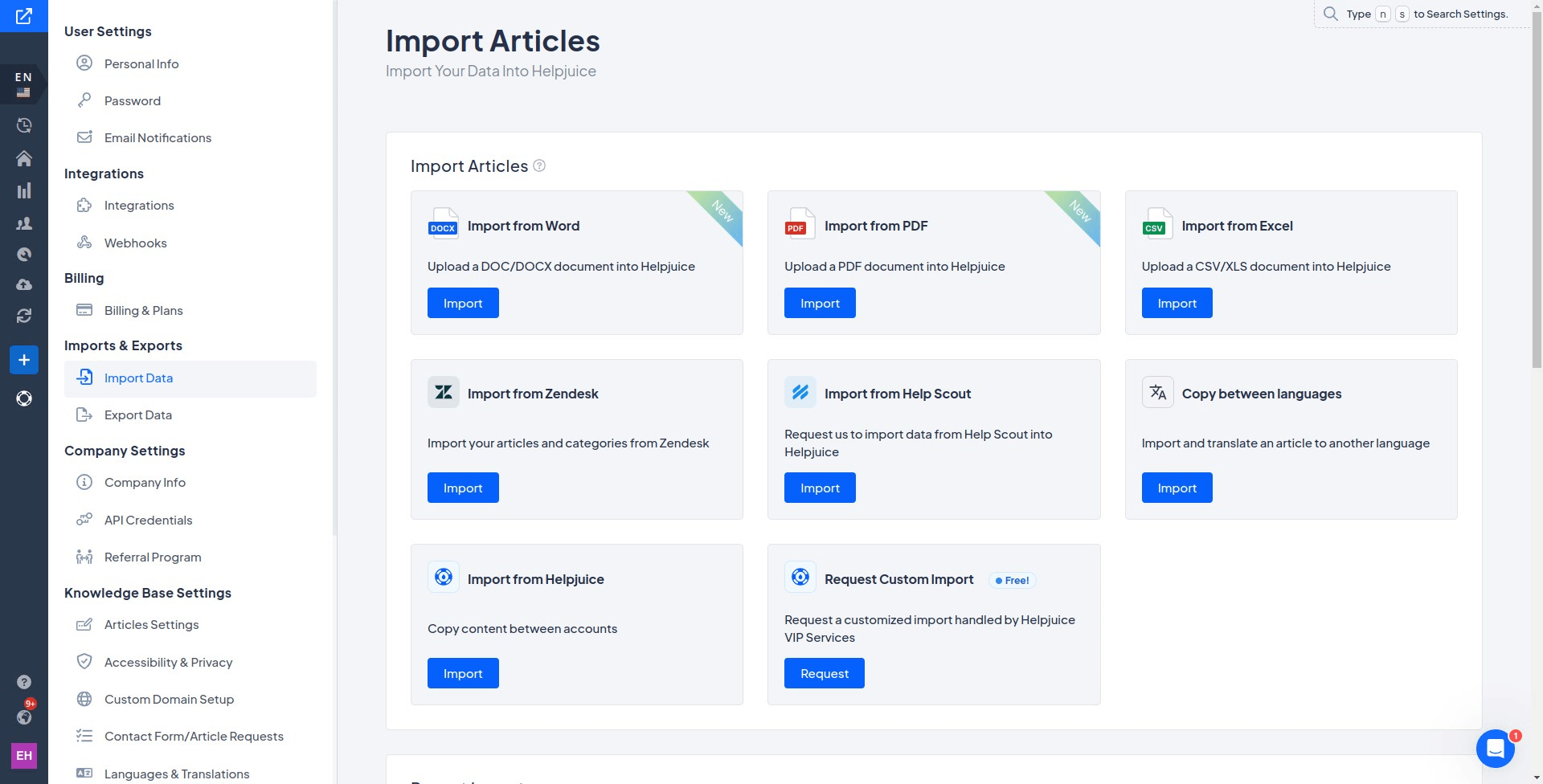
Helpjuice specializes in knowledge base software designed to be powerful yet simple. It offers extensive customization options that allow organizations to create their IT knowledge base to match their specific branding and user interface requirements.
The platform’s robust collaboration tools enable multiple team members to work on the knowledge base simultaneously, with changes tracked and synchronized in real-time. It also includes analytics features to monitor user engagement and identify the most frequently accessed content, enabling continuous knowledge base improvement.
Helpjuice offers a 14-day free trial. Paid plan starts at $120/month/4 users.
4. Knowledge Owl
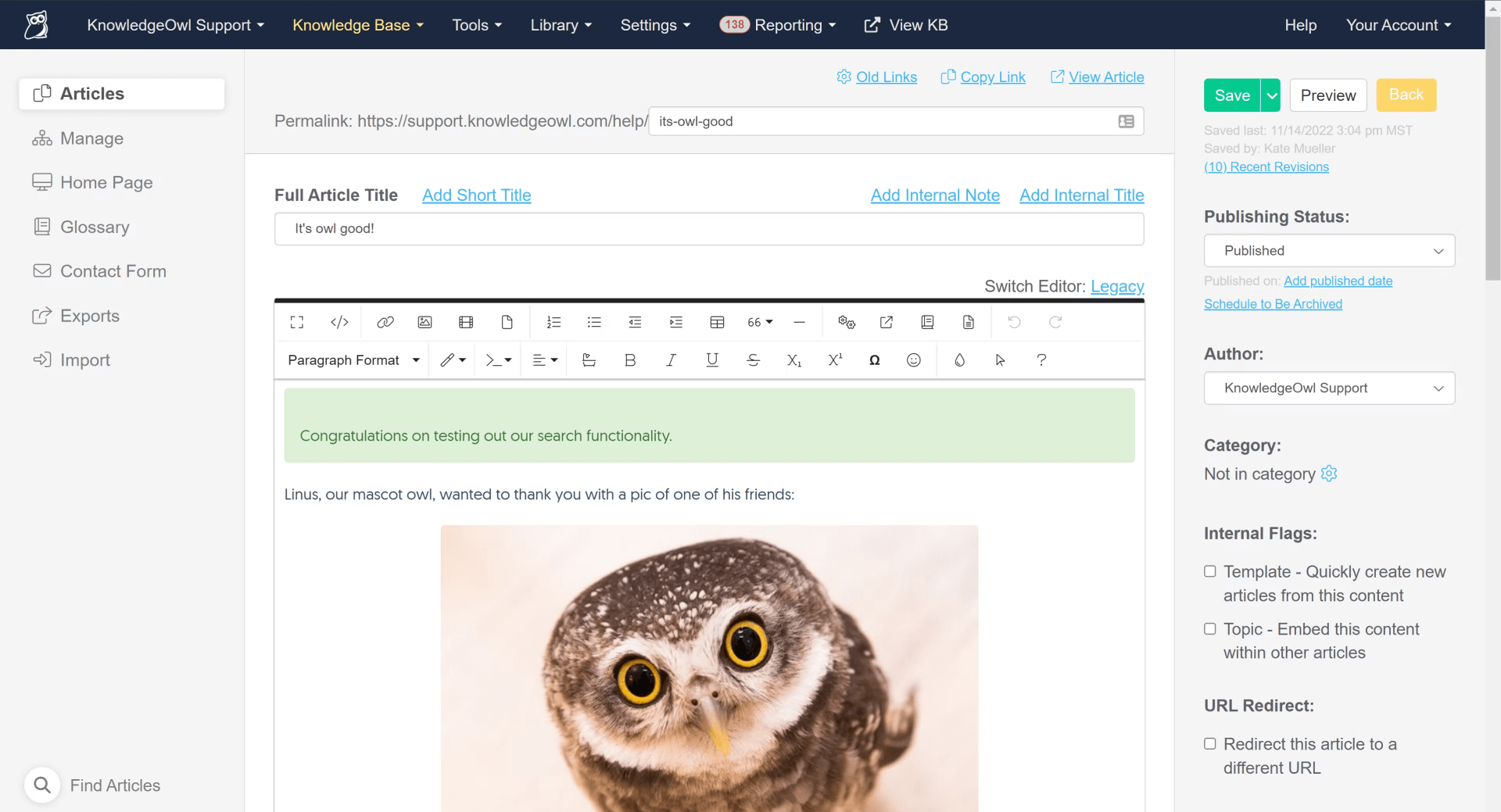
Knowledge Owl provides a comprehensive knowledge base solution that makes creating, managing, and sharing IT documentation and guides easy. The platform features a user-friendly content management system that allows for easy editing and organization of articles.
It also supports rich text formatting and the integration of multimedia elements to create detailed, informative content. It offers powerful search functionality with filtering options, ensuring users can quickly locate the necessary information.
Knowledge Owl offers a free trial. It offers a single, paid plan starting at $90/month.
5. Get Guru
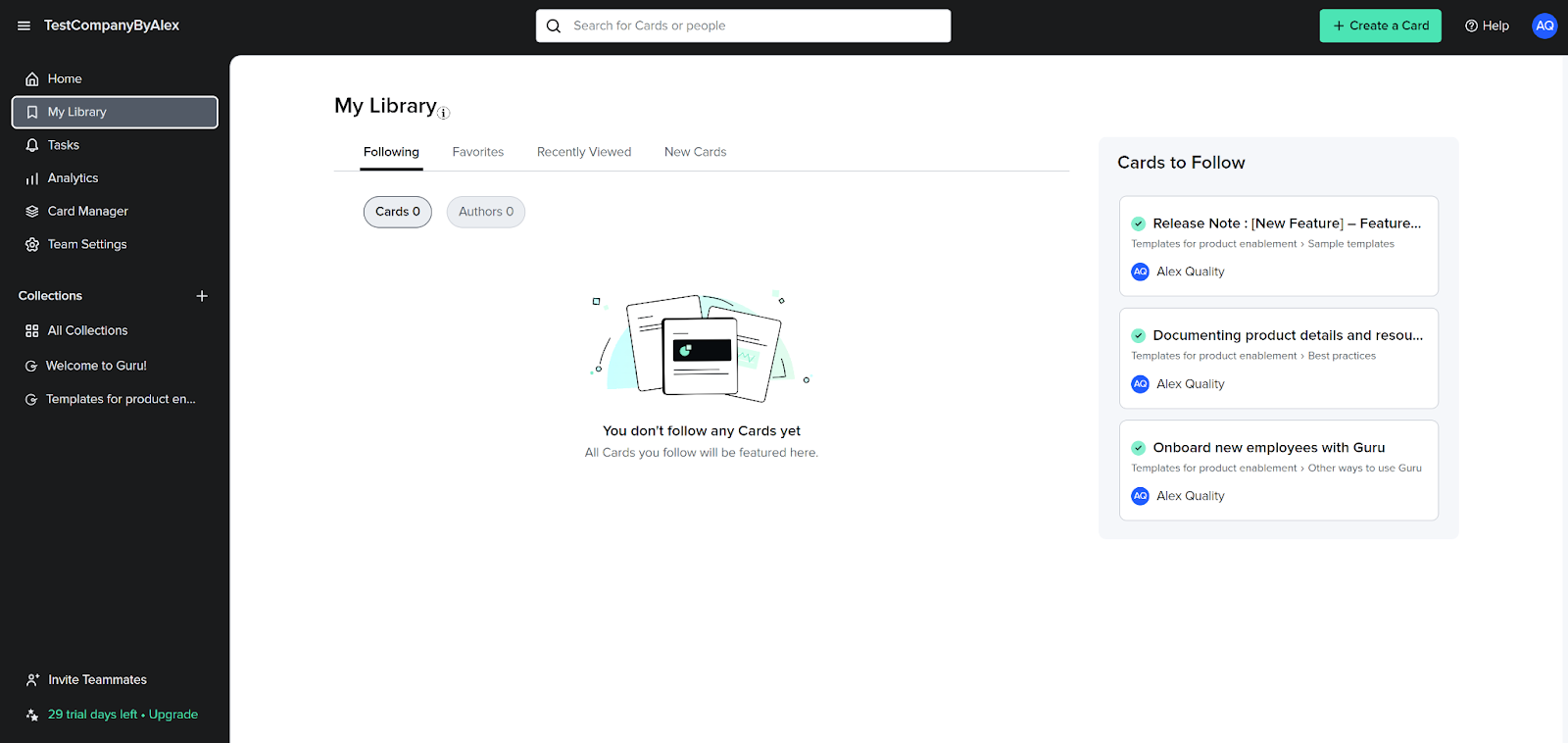
Get Guru offers a knowledge management platform that excels in organizing and securing critical information. It allows teams to create a centralized repository of IT knowledge that can be easily accessed across the organization. One of its standout features is the verification workflow, which ensures that all content in the knowledge base is accurate and up-to-date.
The platform integrates with commonly used tools like Slack and Microsoft Teams, enabling users to access knowledge directly within their workflow environments. Its analytics provide insights into content usage and effectiveness, helping teams optimize their knowledge base continuously.
Get Guru offers a free trial. Paid plan starts at $15/user/month.
Create a Comprehensive IT Knowledge Base for Enhanced Self-Service
An IT knowledge base is an essential tool for any organization that aims to streamline its IT operations and enhance the effectiveness of its support services. It not only simplifies managing and disseminating knowledge but also empowers users with self-service capabilities, leading to faster problem resolution and greater operational efficiency.
Keeping this resource updated and well-organized is crucial for maintaining its relevance and usefulness as technologies and organizational needs evolve. ProProfs Knowledge Base, with its easy-to-use editing tools, robust search functionality, and extensive customization options, helps you build an informative and user-friendly comprehensive knowledge base.
Its integration capabilities with other tools and platforms make it an ideal choice for organizations looking to enhance their IT support framework. Discover more about how ProProfs Knowledge Base can transform your IT support.
 Tips
Tips
We’d love to hear your tips & suggestions on this article!
FREE. All Features. FOREVER!
Try our Forever FREE account with all premium features!

 We'd love your feedback!
We'd love your feedback! Thanks for your feedback!
Thanks for your feedback!







